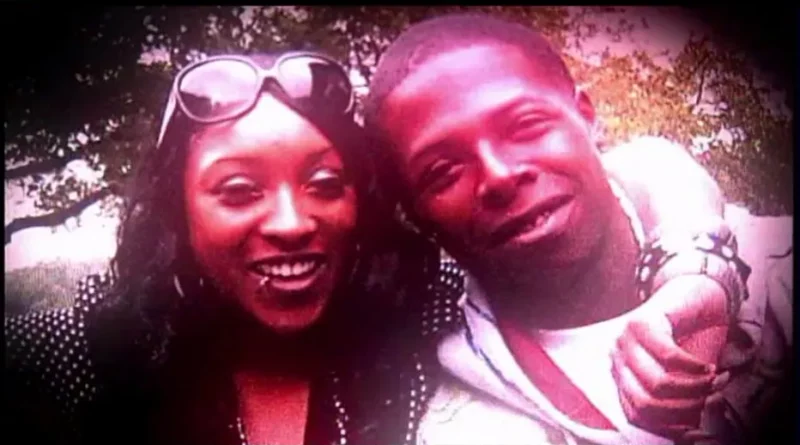Yolanda Brown and JeTannue Clayborn Murdered at Music Studio in Milwaukee Wisconsin
Yolanda Rose “LaLa” Brown and JeTannue “Kool-Aid” Clayborn were names on the cusp of wider recognition when their lives were violently cut short. Both in their early twenties, they embodied fresh talent, ambition, and the collaborative spark that drives creative endeavors. On the night of October 19, 2007, the warm hum of possibility that filled a Milwaukee recording studio gave way to silence and shock. Their double homicide not only ended two bright futures but also ushered in a drawn-out quest for answers. In the years since, the case has become emblematic of frustration in cold-case investigations—a haunting reminder of lives interrupted and questions unanswered.
Early Lives and Individual Paths
Yolanda Brown was born in Milwaukee in 1986 to a multicultural family—a Mexican-American mother and an African-American father. From a young age she gravitated toward music and performance, singing in church choirs and talent shows by age eleven. Known affectionately as “LaLa,” she honed her skills at Milwaukee High School of the Arts, where peers recognized her as both gifted and driven. JeTannue Clayborn, two years Yolanda’s senior, grew up in the same city with a deep affinity for rhythm and production. He earned the nickname “Kool-Aid” for his effervescent personality and his penchant for mixing beats that melded R&B warmth with hip-hop edge. Their divergent journeys converged in mid-2007 when both returned to Milwaukee with a shared goal: to make their mark on the national music stage.
Rise to Recognition and Creative Collaboration
In 2006, Yolanda landed a breakthrough feature on a major R&B single that climbed the charts, validating her vocal prowess and opening doors in Atlanta’s competitive music scene. Meanwhile, JeTannue built a modest but growing reputation for crafting polished demos for local artists and hosting small showcases at regional venues. Their collaboration began when Yolanda sought fresh production for her debut solo tracks, and JeTannue’s name surfaced through mutual acquaintances. Meeting in a downtown studio, they discovered instant creative chemistry: her soulful runs complemented his crisp beats, and their mutual enthusiasm fueled long nights of writing and recording. Tracks like “I’m Feeling It” and “Give Them What They Want” started circulating online, hinting at a promising career trajectory.
Return to Milwaukee: Setting the Stage
By October 2007, both artists had decided to finalize key recordings in JeTannue’s home studio—Loud Enuff Productionz—nestled in a converted warehouse near 55th Street and Lisbon Avenue. The location was unassuming: a small brick building with a single entry door and minimal signage. Inside, the space was partitioned into a control room and a vocal booth, lit by soft red lamps. Equipment ranged from vintage preamps to a basic array of microphones. On the day of October 19, they planned to record final takes and fresh demos, setting the groundwork for approaching labels and securing distribution. Close collaborators dropped in periodically, but for much of the evening, the space was theirs alone.
The Night of October 19, 2007
Accounts from that evening indicate that Yolanda arrived around dusk, carrying lyric sheets and personal effects. JeTannue greeted her enthusiastically, and they settled into the booth for vocal warm-ups. Over the next few hours, they tracked two new songs and discussed promotional strategies. Witnesses heard laughter drifting through the walls, punctuated by their playful banter. Sometime after midnight, the session wrapped up; Yolanda packed her notebook while JeTannue backed up the digital files. Shortly thereafter, a single gunshot shattered the creative calm, followed by a series of rapid blasts. By the time neighbors approached the building in response to distant noises, the recording booth lay empty—save for discarded microphones and a spilled bottle of water.
Discovery and Initial Response
Emergency calls to local dispatch began just after 1:00 AM when a passerby spotted the studio’s side window shattered and pooled liquid on the threshold. First responders entered cautiously, finding Yolanda and JeTannue slumped against opposite walls of the booth. Both had sustained multiple gunshot wounds to the torso and head. The control room remained untouched; laptops and hard drives sat open as if awaiting their return. Paramedics arrived within minutes but pronounced both victims dead at the scene. Law enforcement secured the perimeter, cordoning off the studio and blocking nearby streets. Word spread quickly across Milwaukee’s music circles, plunging friends, fans, and fellow artists into mourning and disbelief.
Crime Scene Examination
Detectives and crime scene technicians swarmed the studio in the early hours, photographing every angle and dusting for fingerprints. They recovered shell casings of a caliber not commonly used in urban crime—suggesting either an unusual choice by the perpetrator or an attempt to mislead investigators. In the vocal booth they found no signs of struggle: cables were neatly coiled, and personal items such as Yolanda’s diary and JeTannue’s headphones lay undisturbed. However, a single bloody fingerprint was lifted from the microphone stand, and small droplets of blood marked a path from the booth to a back corridor. Security cameras in neighboring buildings captured a white sedan idling outside the studio shortly before the incident and speeding away into the night, but the license plate was only partially legible.
Forensic Findings and Evidence Challenges
Laboratory analysis of ballistic fragments identified the weapon as a compact handgun, but the specific make and model proved difficult to trace due to the absence of a fired cartridge for comparison. Blood spatter analysis suggested that at least one victim remained conscious after the initial shot, moving slightly before succumbing. Investigators cataloged trace fibers—likely from a dark jacket—near the booth entrance. Yet contamination issues emerged: the studio’s small footprint meant that first responders and journalists inadvertently disturbed portions of the scene. Critical evidence—such as footwear impressions in a thin layer of dust—was later deemed inconclusive. The lack of clear DNA beyond the victims’ own samples further hampered efforts to identify a suspect.
Witness Accounts and Early Leads
Within days, detectives interviewed over two dozen individuals: studio clients, local promoters, and neighbors. One attendee recalled seeing a hooded figure enter the building shortly after Yolanda’s session began, though the memory lacked detail. Another neighbor reported hearing heated voices emanating from the front room ten minutes before gunfire erupted. A third witness described a vehicle parked unusually close to the entrance, its headlights briefly flickering on. Despite these fragments, no single account provided a cohesive timeline or clear suspect description. Law enforcement leaned on tips from the public, setting up a tip line and offering a reward for information leading to an arrest.
Suspect Identification and Custody
Nearly nine years after the murders, in July 2016, Milwaukee Police announced they had a person of interest in custody on unrelated charges in another state. Investigators believed ballistic and behavioral evidence linked this individual to the double homicide. Family members of both victims expressed cautious relief, though prosecutors noted the evidence remained largely circumstantial. The suspect’s defense attorneys contested the validity of the forensic matches, citing potential chain-of-custody lapses and the degraded condition of samples. As of this writing, formal murder charges have not been filed, pending further review by the district attorney’s office and additional forensic testing.
Impact on Milwaukee’s Music Community
The deaths of Yolanda and JeTannue reverberated far beyond their immediate circle. Local venues that once hosted their performances erected memorial posters, and benefit concerts raised funds for scholarships in their names. Aspiring artists who viewed them as role models confronted the harsh reality that creative spaces could also harbor danger. Music educators in Milwaukee incorporated safety protocols into lesson plans, emphasizing after-hours security and buddy systems. The studio itself remained closed for months, its faded sign a silent testament to dreams deferred.
Family Grief and Advocacy
For the Brown and Clayborn families, the trauma extended beyond public sympathy. Yolanda’s young daughter, born at age sixteen, grappled with the absence of a mother she barely remembered. JeTannue’s siblings found themselves guardians of both a personal loss and the weight of his unfinished legacy. Both families banded together to form the “Voice for Justice” coalition, lobbying for enhanced cold-case resources and improved cross-jurisdictional collaboration among Wisconsin law enforcement. They held annual memorials at the studio site, urging anyone with knowledge to come forward—emphasizing that even anonymous tips could break the stalemate.
Media Coverage and Renewed Interest
National true-crime outlets picked up the story, profiling the case in podcasts and documentary segments that reignited public curiosity. The portrayal of Yolanda as an emerging female artist navigating a male-dominated industry paralleled broader discussions about safety and equity in creative fields. JeTannue’s role as both producer and de facto manager highlighted the precarious balance between artistic passion and occupational hazards. Online forums dissected every known detail, crowdsourcing analyses of police reports and satellite imagery. While some speculated on conspiratorial motives—ranging from industry rivalry to personal vendettas—none of these theories produced verifiable leads.
Advances in Forensic Technology and Cold-Case Review
In the years following the initial investigation, forensic science made significant strides. Investigators re-examined trace evidence using enhanced DNA sequencing and digital forensic reconstruction of the video footage capture. Improvements in ballistic databases offered renewed hope for matching the recovered fragments to registered firearms. Law enforcement agencies devoted specialized cold-case units to reinterviewing witnesses with refreshed memory protocols. Yet resource constraints and evolving priorities meant progress was incremental. The case became a benchmark for the challenges inherent in investigating small-scale crime scenes where critical moments unfolded in confined, cluttered environments.
The Enduring Legacy of Yolanda and JeTannue
More than a decade on, Yolanda Brown and JeTannue Clayborn stand as symbols of unfulfilled potential—a reminder that talent, once nurtured, can be snuffed out suddenly and unjustly. Scholarships in their names have supported dozens of young musicians, ensuring that their creative spirits continue to inspire. Artists who once shared studio time recount memories of their unbridled optimism and collaborative generosity. Community leaders in Milwaukee have designated October 19 as a day of remembrance, urging conversations about both creative opportunity and personal safety.
Conclusion
The murders of Yolanda Rose Brown and JeTannue Clayborn remain unresolved, their circumstances shrouded in partial evidence and fleeting recollections. Yet their story endures not only in cold-case files but in the hearts of families, friends, and fans who refuse to let their memories fade. As forensic capabilities advance and public interest endures, there remains hope that the investigative pieces will ultimately coalesce, bringing accountability and peace of mind. Until then, the studio door that once echoed with music stands as a solemn monument to two lives cut abruptly short—and a community’s unwavering quest for the justice they deserve.
Discover more from City Towner
Subscribe to get the latest posts sent to your email.



